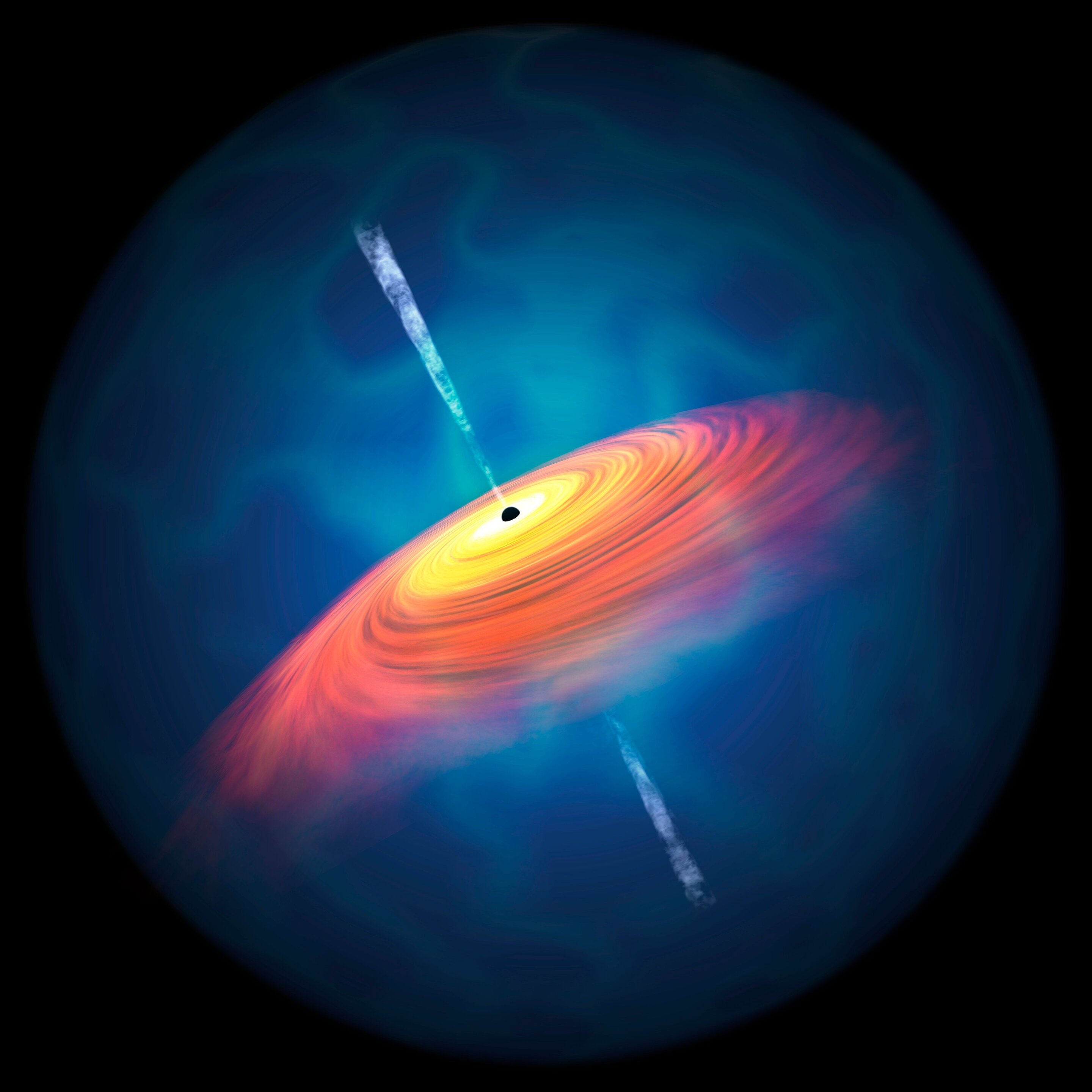Supermassive black holes (SMBHs)—black holes with masses exceeding a million times that of the sun—are known to prevail in the universe today. However, it is not clear yet when, where, and how they formed during the 13.8 billion years of cosmic history.
Observations in the past few decades have revealed that every galaxy harbors a SMBH in the center, and that the black hole mass is almost always one-thousandth of the host galaxy mass. This close relationship implies that galaxies and SMBHs have co-evolved together. Revealing the origin of SMBHs is thus crucial not only to understand SMBHs themselves, but also to elucidate the formation processes of galaxies, the major constituents of the visible universe.
A key to addressing this issue lies in the early universe, where the time elapse since the Big Bang (i.e., the beginning of the universe) was less than a billion years. Thanks to the finite speed of light, we can look back at the past by observing the distant universe. Did SMBHs already exist when the universe was only a billion years old or less? Is it possible for a black hole to acquire such a large mass (exceeding a million solar masses and sometimes reaching billions of solar masses) in such a short time? If so, what are the underlying physical mechanisms and conditions?
In order to close in on the origin of SMBHs, we need to observe them and compare their properties with predictions from theoretical models. And in order to do so, we first need to find where they are in the sky.
We used the Subaru Telescope at the top of Maunakea, Hawaii, for the present study. One of the biggest advantages of Subaru is its widefield observing capability, which is particularly suited for our purpose. Since SMBHs do not emit light, we looked for a special class called “quasars”—SMBHs with shining outskirts where the infalling material releases gravitational energy.
2023-09-01 17:48:02
Original from phys.org
